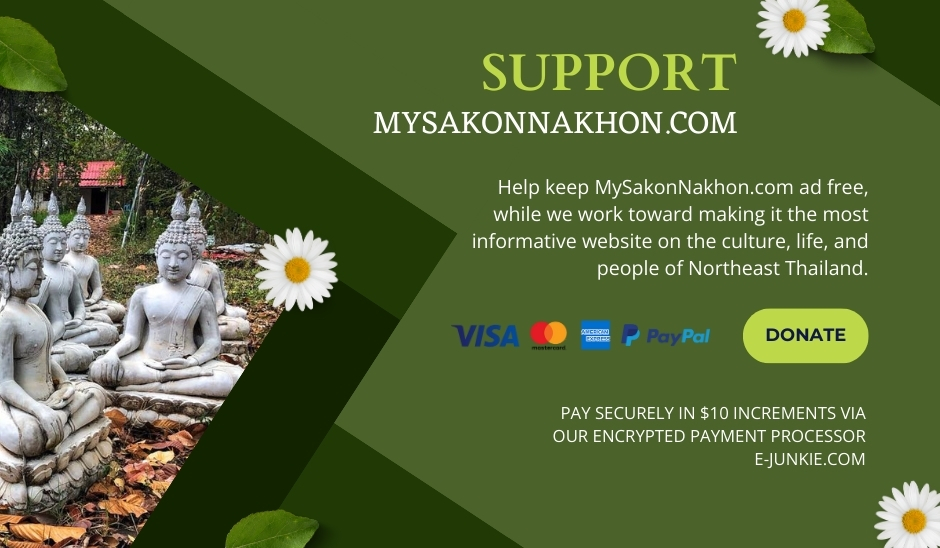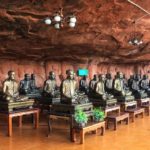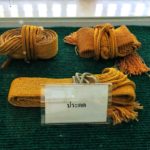
How to Greet a Monk in Thailand – Saying Hello
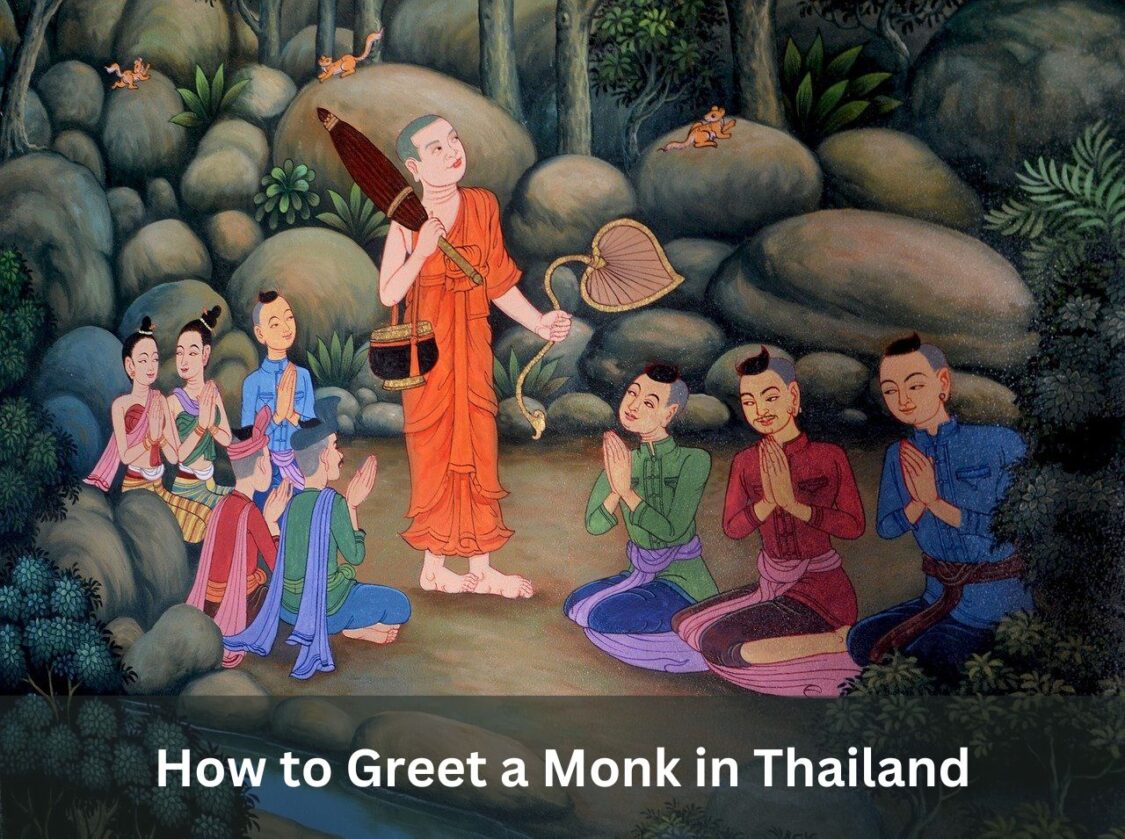
One of the most fascinating things you can do in Thailand is to visit temples off the beaten tourist track. If you take this path of the intrepid traveler, you’ll likely encounter Thai monks. It’s therefore important to know how to greet a Buddhist monk properly, so that they will feel at ease on seeing you. Keep in mind that most rural temples in Thailand never see any foreign or Thai tourists, but are frequented only by local villagers.
When meeting a Thai monk, you should perform the traditional “wai greeting,” but with your clasped hands lifted up higher (i.e. to the middle of your face). You shouldn’t speak the typical Thai greeting, “Sawat Dee Khrap/Kha”. Instead, you should say hello to the monk with the word: “Satu” (สาธุ), which is pronounced “sah-too”.
Satu is an ancient Pali/Sanskrit word that means “pay respect to,” and it’s a greeting specifically reserved for monks. It also is the Thai word for “amen” — a word which you’ll hear at the end of Buddhist sermons and chanting in Thailand.
Another word used to greet a Thai monk is “Namatsagaan” (นมัสการ), which also means “pay respect to”. And it has a secondary meaning of: “to worship”.
“Namatsagaan” is less commonly used in Isaan (Northeast Thailand), compared with “Satu”. It also is easier to forget, but you can try to remember it by noticing its similarity with the Indian (Sanskrit) greeting “Namaste”.
Note that when greeting a monk in Thailand, they are under no obligation or social custom to return your greeting. If you are greeting a monk in a public place, like at a store or on public transportation, you likely will receive only a smile and/or nod in return.
In rare instances, a monk might respond to your greeting with the phrase “Jaroen Phawn” (เจริญพร), which is essentially a blessing given by Thai monks in response to a greeting.
At Thai temples, it’s been my experience that elder Thai monks (over 50 years of age) are the most likely ones to return your greeting, and approach you, wishing to talk. And by talk, I mean learn why you are visiting their temple.
So, if a monk approaches you at a temple in Thailand, you should have something memorized in Thai which explains your visit, while at the same time letting them know that can’t speak Thai very well.
For example, you might say something like this:
Săa-tú! Phŏm bpen nák-thông-thîeow khráp. Phŏm maa jàak [your country]. Phŏm maa doo wát láe tham boon khráp. Khŏr tôht, phŏm phôot phaa-săa thai mâi gèng khráp.
“สาธุ ผมเป็นนักท่องเที่ยวครับ ผมมาจาก [ประเทศของคุณ] ผมมาดูวัดและทำบุญครับ ขอโทษ ผมพูดภาษาไทยไม่เก่งครับ”
This translates to: “Satu! I am a tourist. I come from [your country]. I came to look at the temple and make merit. I’m sorry. I don’t speak Thai very well.”
Note that when Thais speak to monks, they often will address them as “Phra” (พระ) or, when speaking to a highly revered elder monk, “Luang Phor” (หลวงพ่อ), and have their hands clasped in a “wai” (at chest level) the entire time they are speaking to them.
However, Thai monks don’t expect tourists to know this, and will be happy simply to see that you have greeted them politely, and have taken the time to learn to speak a little Thai.
When visiting a rural Thai temple, it is best never to approach any monk. You may greet them with a “wai” and “Satu” from a distance if you happen to pass near one. Most monks prefer their solitude and quiet, and very few speak any English. If you take any photos, do so discreetly, and turn off the “click” that phones often make when taking a photo.
Beyond saying “satu” as a hello, only attempt to talk with them if they approach you first — which they sometimes will do to bring you a bottle of water on a hot day.
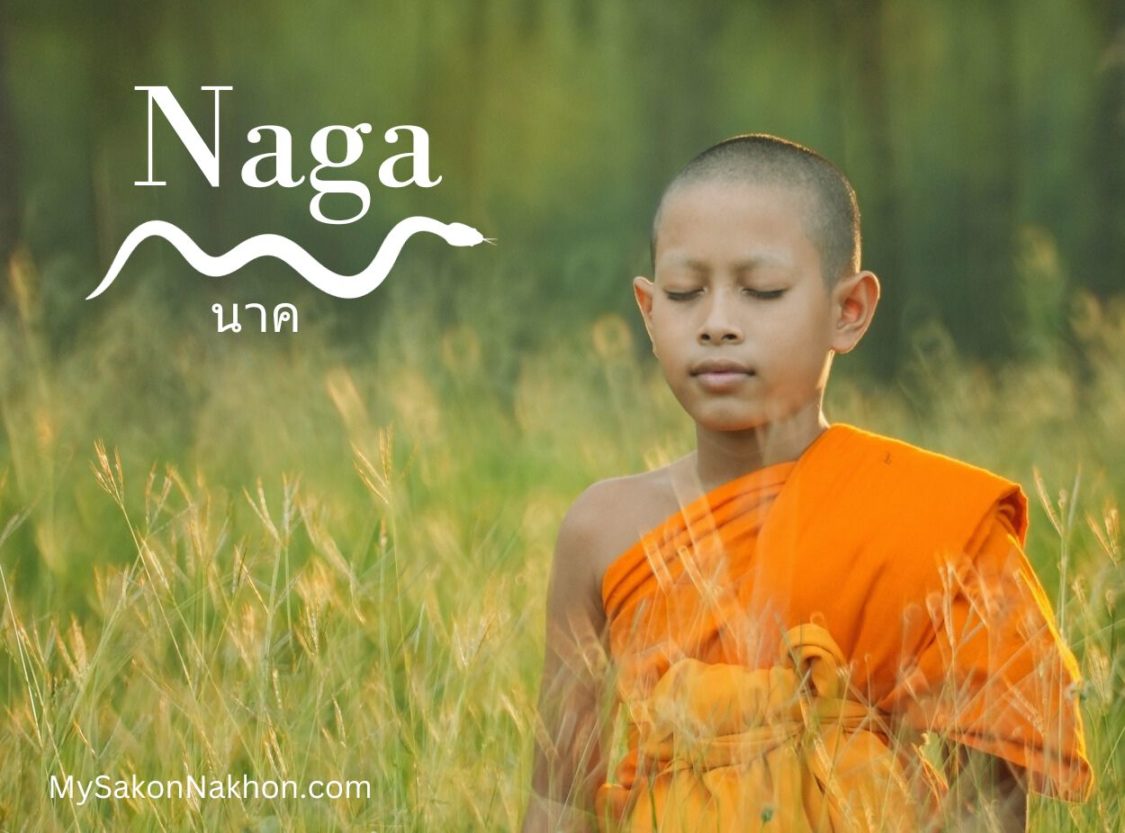
Other Polite Behaviors Toward Thai Monks
1. If being introduced to an elder monk who is sitting on a chair, sit down on the floor before the monk, as it is impolite to stand before a seated monk with your head above his.
2. A male is allowed to receive something directly from the hand of a Thai monk (such as a bottle of water or other gift), but a woman is not. Women should wait for the monk to place the item down first, and then pick it up. Or sometimes the item will be placed on a cloth or tray, which is to be pulled toward you first before picking up the item.
3. On public transportation, you should give up your seat to a monk if none are available in their immediate vicinity. If you enter a bus, sky train, or subway and take a seat next to a Thai monk, you should sit to the left of them, leaving an empty seat in between (if possible).
4. The most comfortable and polite way to sit when before a monk is to tuck your left leg underneath you, with your right leg and foot pointed backwards. Never sit with your feet pointing toward the monk or any Buddha image.
5. When walking behind a monk in Thailand, it is polite to walk on their left side.
- The Royal Ploughing Ceremony in Thailand – A History - May 8, 2024
- Dying Well the Buddhist Way in Thailand - May 7, 2024
- Comforting Words for the Brokenhearted in Thailand - May 6, 2024
